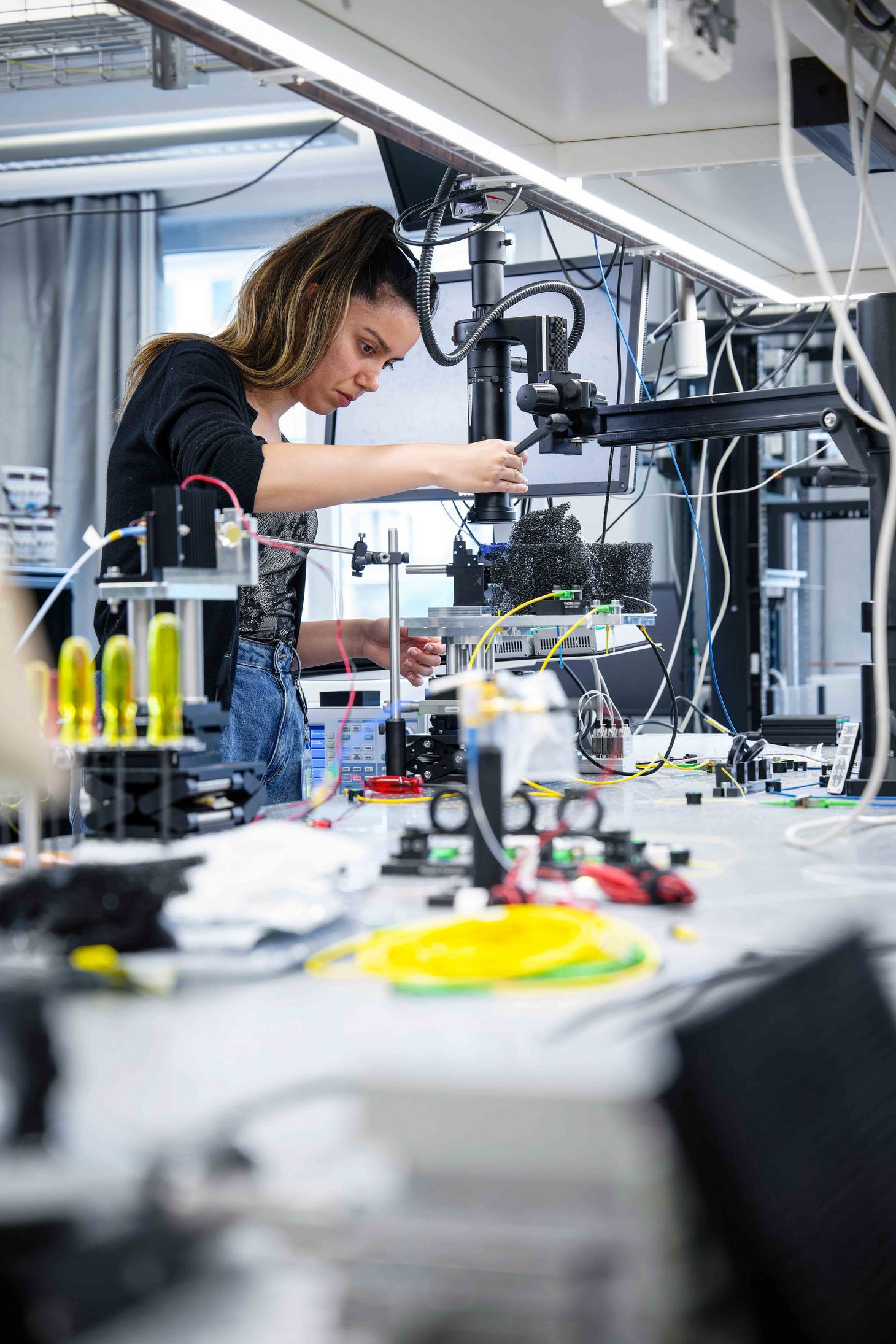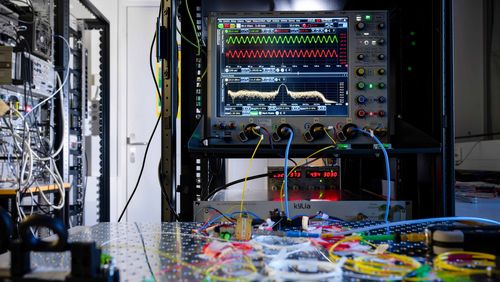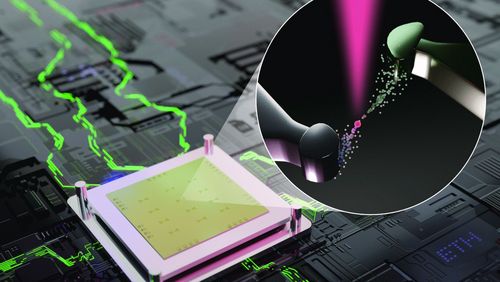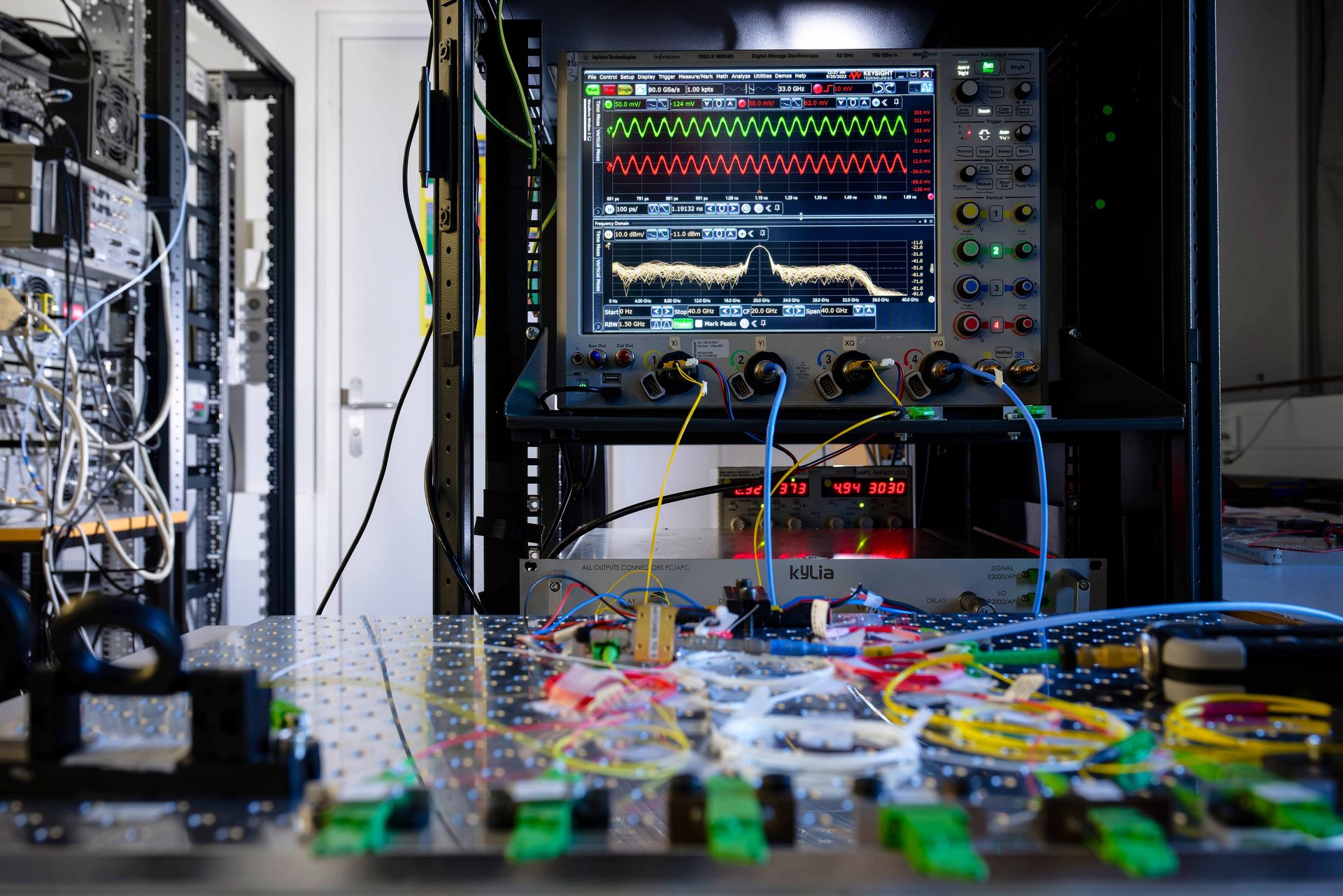
Atomic-scale simulations
Valence-switching cells hold great promise for next-generation IT systems. And now, Mathieu Luisier and his team at ETH Zurich have developed a highly flexible model that can simulate the formation and behaviour of these complex memory components. The researchers’ work is part of the single-atom switch project funded by WSS.
Although computer technology has made rapid advances in the past several decades, it’s becoming clear that traditional components and technologies are reaching the limits of the possible. To name just one example, today’s standard, silicon-based memory chips can hardly be miniaturised much further.
And so the search for alternatives capable of even more highly evolved data processing is in full swing. One promising method for storing data is valence change memory (VCM) cells, which are components consisting of two metal layers with an oxide embedded in-between. When voltage is applied, the movement of ions causes the formation of nanoscale filaments made of oxygen vacancies in the oxide. The growth and dissolution of these filaments is what triggers an electric circuit to be switched off and on.
“But many details regarding how VCM cells function are still not understood,” says Mathieu Luisier, professor at ETH Zurich’s Integrated Systems Laboratory and a research partner in the single-atom switch project that receives funding from the Werner Siemens Foundation. The fact that the processes in VCM cells occur at the atomic scale makes measurements difficult. To be sure, images can be made using extremely powerful microscopes, but this only documents a momentary state.
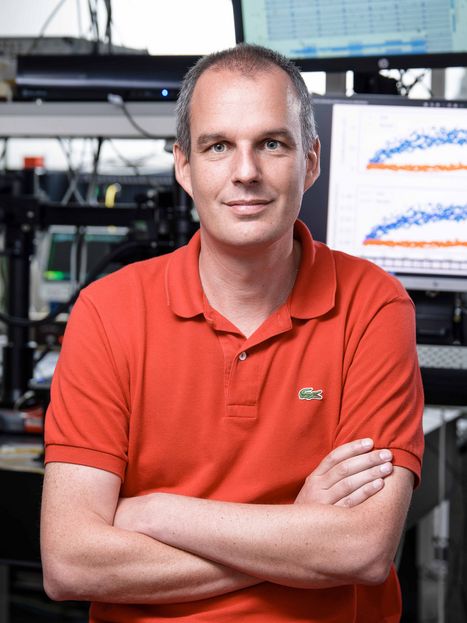
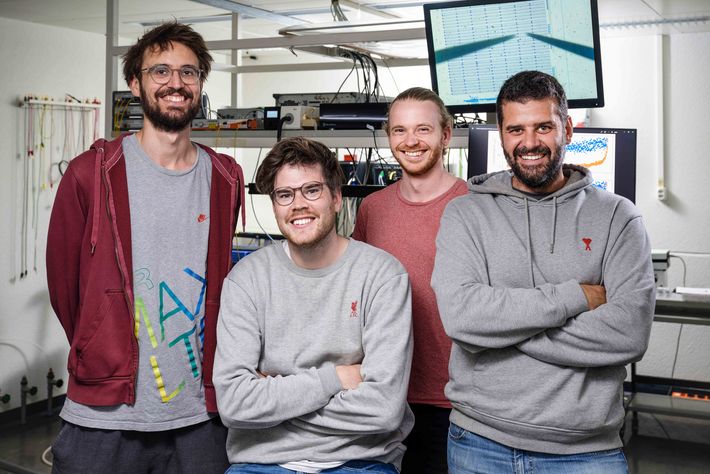
Featured on cover of peer-reviewed journal
Models that simulate such processes are another way of studying these minuscule components in greater detail: they enable researchers to play out how ions move, how oxygen vacancies form or how different kinds of oxides impact conductivity in a component. Luisier says these kinds of models have been around for a while, but they capture only a portion of the physical processes that occur in a VCM cell.
Marko Mladenovic, a postdoc funded by WSS, and PhD student Manasa Kaniselvan worked with Luisier to develop a multiscale model capable of simulating a wide range of atomic processes in VCM cells. Their study was recently published in the peer-reviewed scientific journal ACS Nano, and an image generated by Kaniselvan was even featured on the cover. For the study, the team used hafnium oxide (HfO2) embedded in layers of titanium nitride and titanium—a component type that’s also compatible with the CMOS technology so commonly used in present-day IT systems.
Three simulation methods
The model integrates three different simulation methods, as Luisier explains: “With the first, called density functional theory (DFT), we can calculate the amount of energy an atom needs to move from one place to another.” Using DFT, the researchers can calculate the probabilities in VCM cells that atoms will move in one direction under set conditions; that ions and vacancies will be generated; or that these particles will bond.
The second simulation method is known as the kinetic Monte Carlo (KMC) method. It simulates how certain processes take place over time. “With KMC, we can study how ions in the VCM cells move on the hafnium oxide layer—and, in doing so, also demonstrate the movement of the oxygen vacancies,” Luisier says. Using quantum transport, the third method, the researchers can determine current flow under set conditions.
Thanks to the simulations, the researchers were able to show how the electrons flow through the structures. “We discovered that the flow occurs through undercoordinated hafnium atoms that have no saturated or ‘dangling’ bonds,” Luisier says.
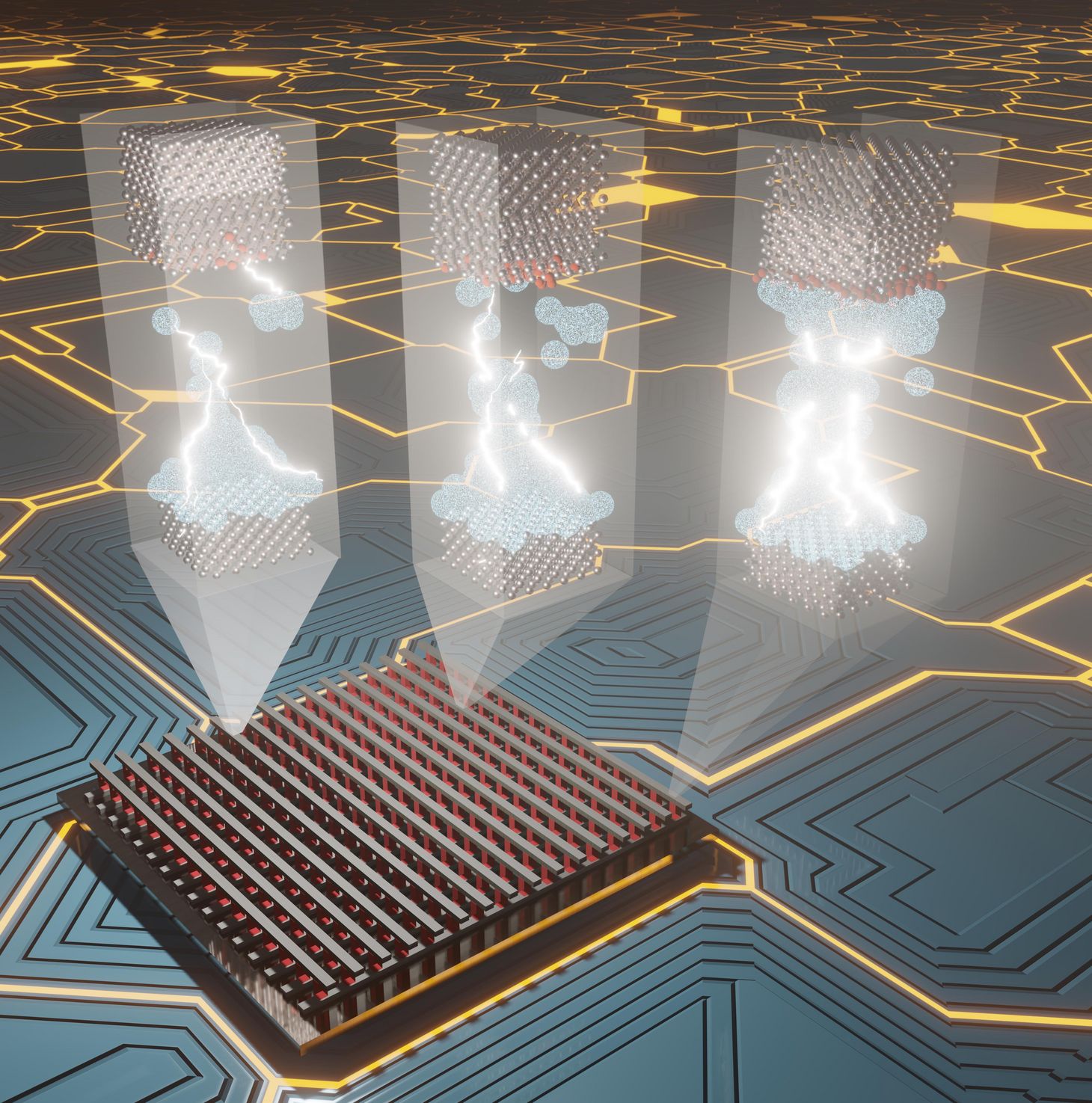
Three simulation methods
The model integrates three different simulation methods, as Luisier explains: “With the first, called density functional theory (DFT), we can calculate the amount of energy an atom needs to move from one place to another.” Using DFT, the researchers can calculate the probabilities in VCM cells that atoms will move in one direction under set conditions; that ions and vacancies will be generated; or that these particles will bond.
The second simulation method is known as the kinetic Monte Carlo (KMC) method. It simulates how certain processes take place over time. “With KMC, we can study how ions in the VCM cells move on the hafnium oxide layer—and, in doing so, also demonstrate the movement of the oxygen vacancies,” Luisier says. Using quantum transport, the third method, the researchers can determine current flow under set conditions.
Thanks to the simulations, the researchers were able to show how the electrons flow through the structures. “We discovered that the flow occurs through undercoordinated hafnium atoms that have no saturated or ‘dangling’ bonds,” Luisier says.
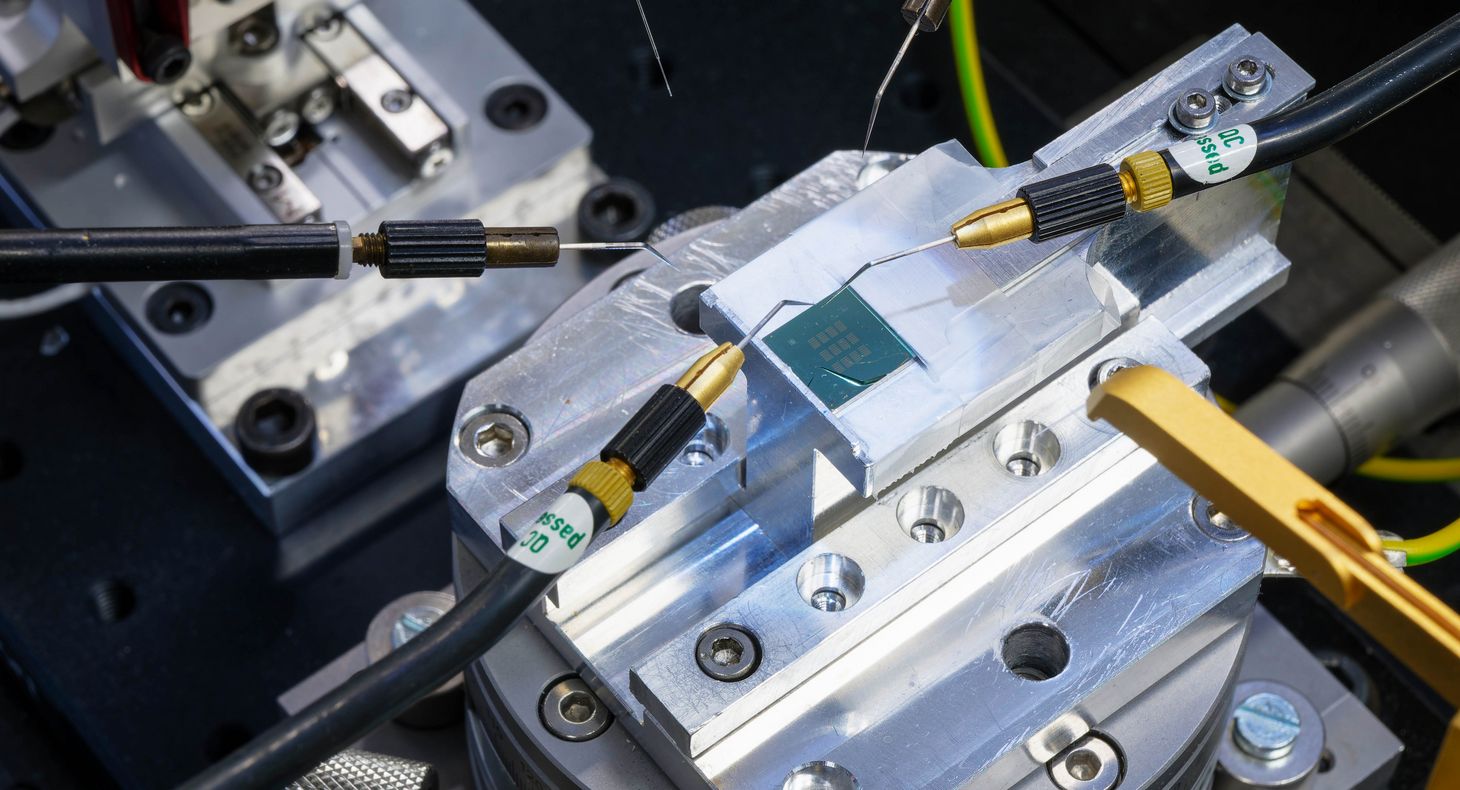
Valuable tool in single-atom switch project
The findings are especially relevant, as the simulation model can be used in future to study different materials and memory cell architectures. According to Luisier, it’s the first model that’s capable of builing atomistic structures and, on the basis thereof, inferring the behaviour of electricity and voltage in such memory devices. This means that researchers will be able to determine how a material or the structure of a cell impacts performance—and ultimately answer the question as to how VCM cells should be constructed to make powerful computer chips out of them.
The new simulation model is also highly useful for the experiments of other researchers in the single-atom switch project, in particular Jürg Leuthold and his team at ETH Zurich’s Institute of Electromagnetic Fields. Because there are very many different ways of constructing their electronic components, testing each of them in reality would be impossible—if only because it can easily take months to produce a new component. With the simulation model, the researchers now have a powerful tool at their disposal that allows them to quickly distinguish promising structures from those that are less viable.
Luisier says that one of the most fascinating aspects of the VCM cells is their flexibility. Present-day computers are based on a binary principle: the power is either off or on. “They’re digital, so they only know zeros and ones,” Luisier explains. The human brain, by contrast, is analogue: its synapses also operate with variations and in-between phases. With VCM cells, this way of functioning could be replicated, as they can be used to generate more than two digital states. Mathieu Luisier says, “In future, we could use them as components in what is known as bio-inspired computing.”
> Link to the study
